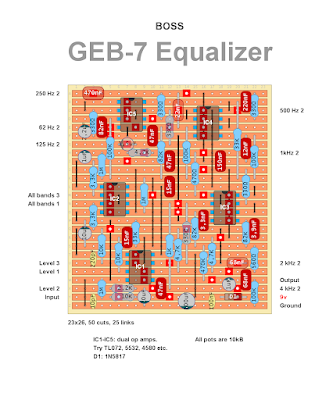Once again, a guest appearance. Chris at CDC was brave enough to dabbling with some Spin FV-1 processors. Yes, these are SMD parts there is several vendors online that sell adapter boards.
This one is VERIFIED.
Since I started building effects in 2020, there has been a "level up" step I've been avoiding. As the level digital signal processing that is available through industry standard effect makers like TC Electronic, Boss, Line 6 and Strymon filters down to the DIY/hobbyist level - there really is no excuse for not at least TRYING digital signal processing.
The most commonly available engine of these DSP effects is the Spin FV-1 reverb processor. They are about $10-$15 each and have 28 tiny little surface mount legs that need to be soldered to tiny little pads on the circuit board without any bridging. So I've been squeamish and avoided them. Until now (dun dun).
After about 3 years of doing this I felt like my dexterity and soldering iron proficiency had progressed to the point where I shouldn't put this off any longer. I also MUST thank DK pedals for their tutorial that was a serious confidence builder.
This effect contains that chip - soldered to an adapter board designed by MAS Effects, which is attached to my stripboard layout of the Madbean Headtrip 2 FV-1 project. It also contains the algorithm chip from that project featuring the presets designed by Brian of Madbean..
The 5 knobs are for dry and effect level, as well as three parameters that change with each effect preset. There's a lot to cover with this pedal, which is why my video is about 5 times longer than anything I've posted so far... if you make it through all 8 clips, I salute you!!!
Mode 1: Choir - similar to the EQD organizer, with the controls condensed to three knobs: octave down, octave up, and choir (which has a slight delay on the signal)
Mode 2: Filter+Octave - an envelope follower that is controlled by knobs 1&2, with an octave up and down dialed in by knob 3.
Mode 3: Detune+Tremolo - this is similar to the "detune" mode on the Whammy pedal. Its's a faux chorus of sorts. Knobs 2&3 control the speed and depth of the tremolo
Mode 4: Flangecho - an 850ms delay. Length and repeats are knobs 1&2, flanging level in the repeats is knob 3.
Mode 5: Echo+??? - a 975ms delay. Knobs 1&2 are the same as mode 4. Knob 3 controls a multi effect that goes from modulation to buzzy ring modulation to tremolo in the repeats.
Mode 6: Flangeverb - knob 1 is the reverb level, knob 2 is the low cut, knob three blends in a similar flange modulation as on mode 4.
Mode 7: Choirverb - a "shimmer" reverb with verb level on 1, low cut on 2, and octave up & down on knob 3.
Mode 8: 4th/5thverb - reverb level on knob 1, 4th down on knob 2, 5th up on knob 3. This doesn't show quite as much on the video but this is definitely the most organic/analog synth-sounding patch of these 8 (in my opinion)
Now the footswitches: the left switch is a "master on/off" that bypasses the entire circuit.
The right switch kills the input to the effect chip and allows the reverb/delay/choir to trail off naturally. HOWEVER - this will keep the dry blend knob in play and depending on where you have it set, this knob can boost the heck out of your signal. Which can be a good or bad thing... up to you.
Are any of these sounds "usable"? That's a matter of taste, of course, but at the very least, NONE of them are delicate. Thanks for reading this far...
-Chris, CDCE

